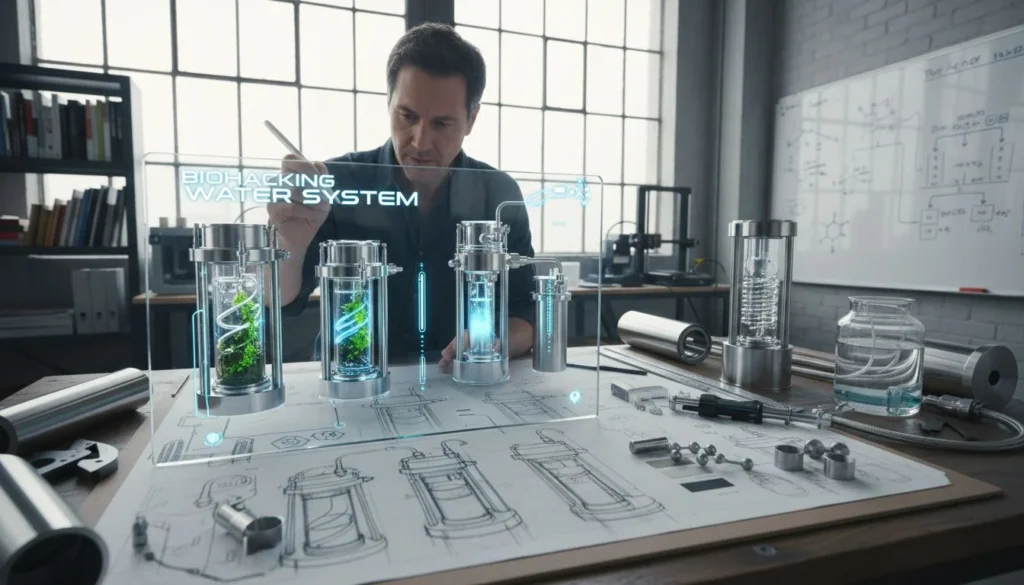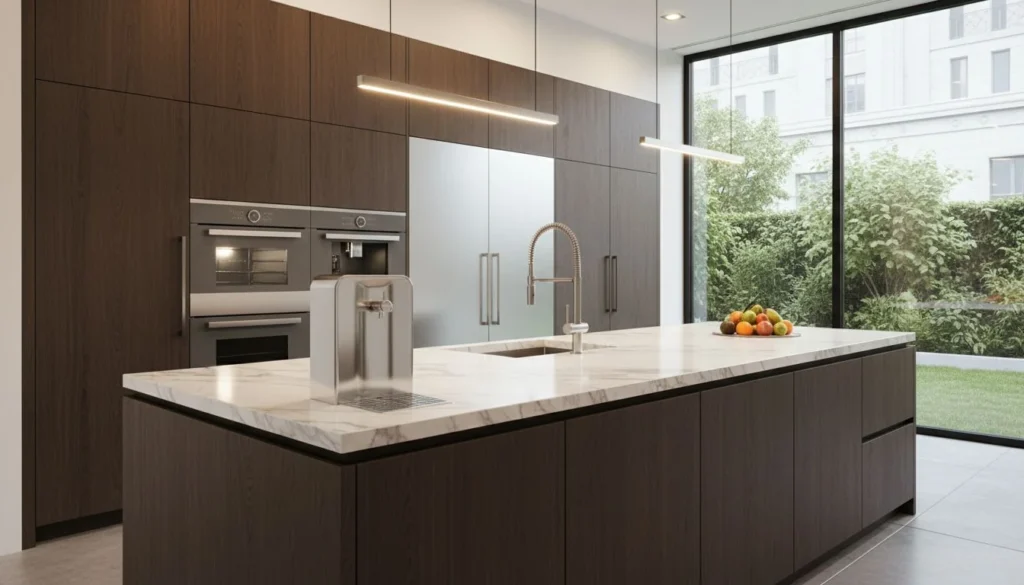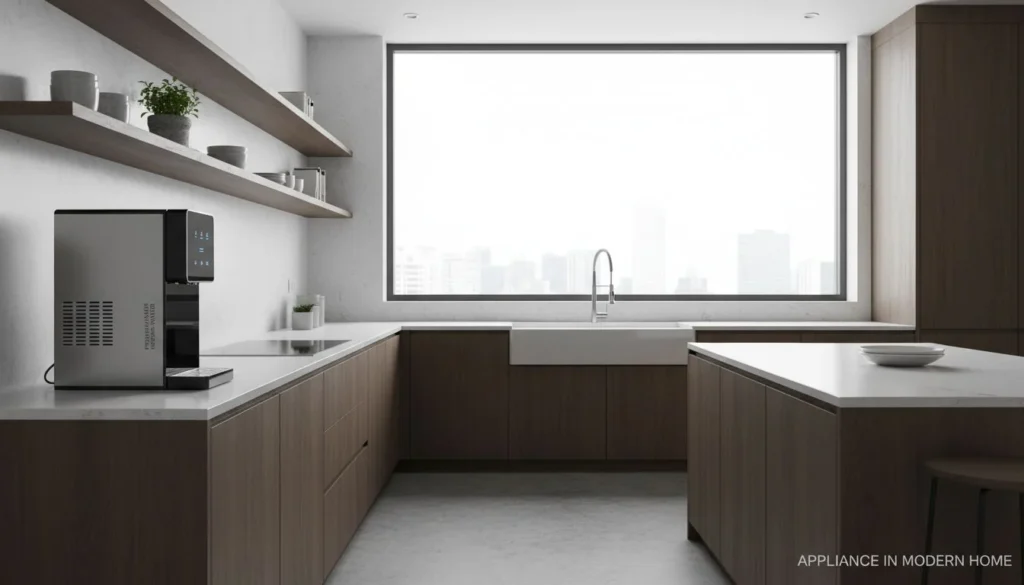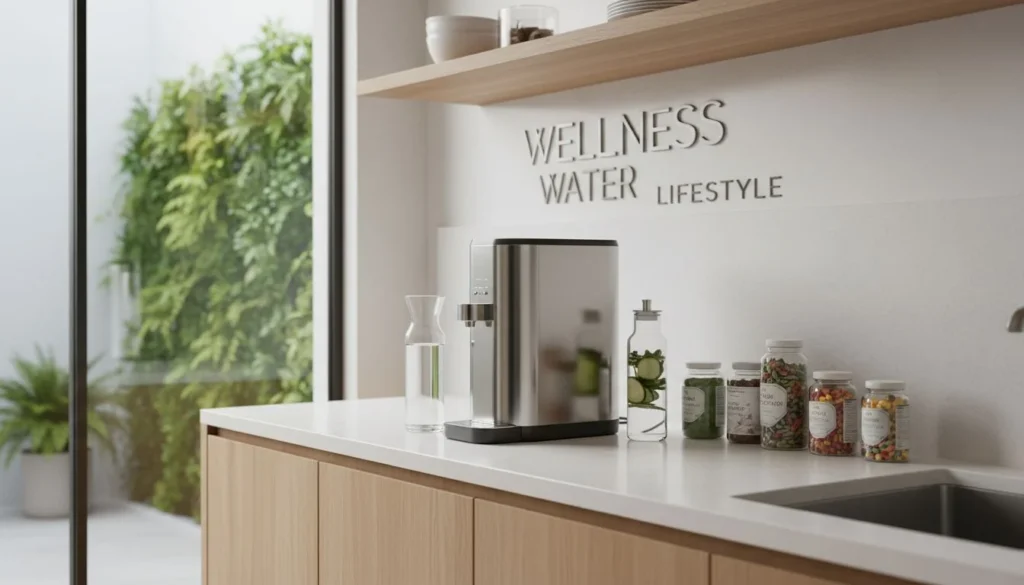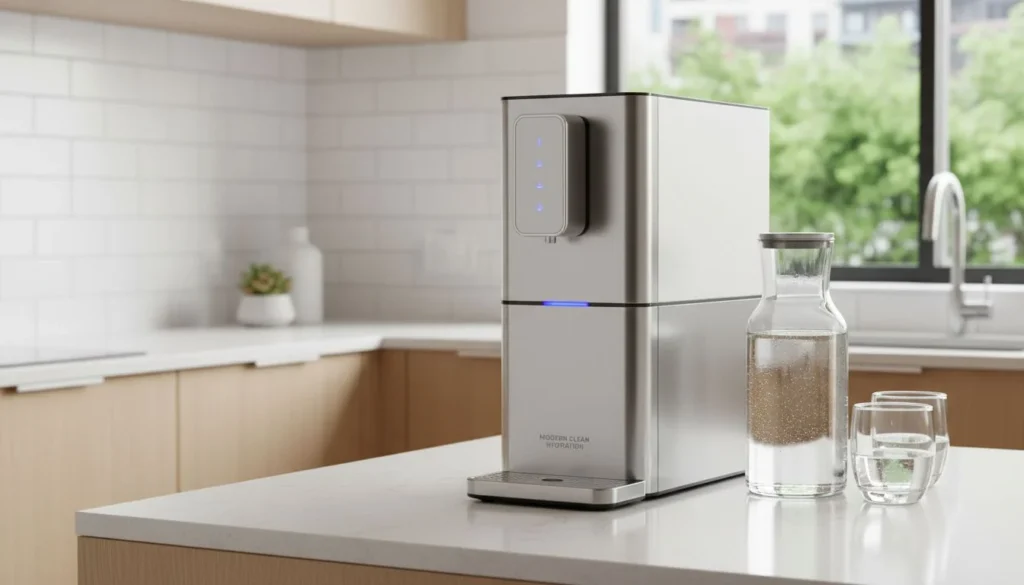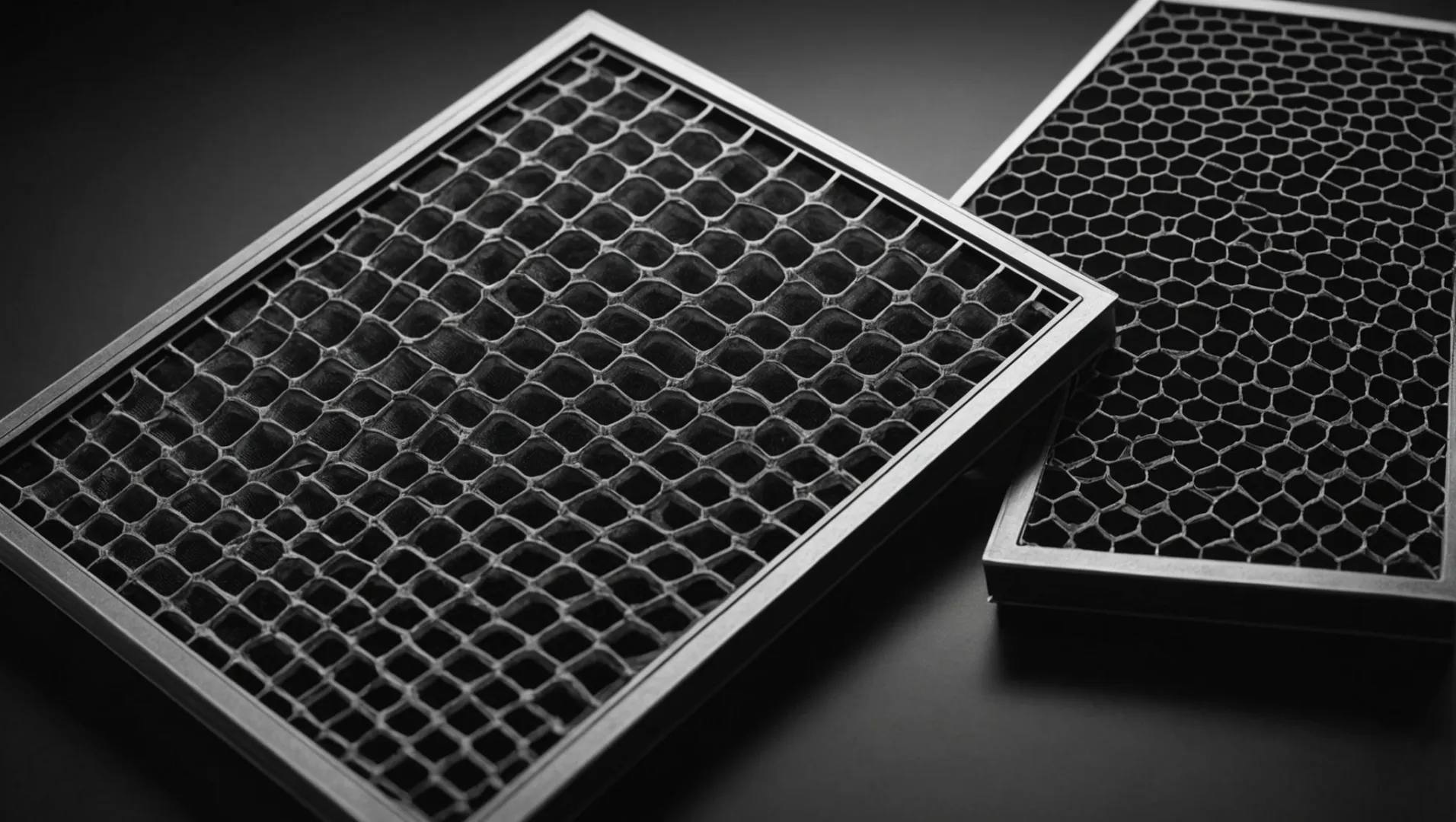
Choisir entre HEPA et les filtres à charbon est plus qu'une simple décision technique, c'est un pas vers un mode de vie plus sain.
HEPA sont supérieurs pour éliminer les particules en suspension dans l'air, tandis que les filtres à charbon excellent dans l'élimination des odeurs et des composés organiques volatils (COV). Pour une purification complète de l'air, de nombreux systèmes combinent ces deux types de filtres afin de répondre à un large éventail de problèmes liés à la qualité de l'air.
Comprendre les forces et les limites des HEPA et les filtres à charbon peuvent vous aider à choisir la meilleure option pour vos besoins en matière de qualité de l'air. Nous allons nous pencher sur le fonctionnement de ces filtres et découvrir celui qui convient le mieux à votre situation particulière.
Les filtres HEPA éliminent efficacement les odeurs.Faux
Les filtres HEPA capturent les particules, pas les odeurs. Les filtres à charbon éliminent les odeurs.
Qu'est-ce que HEPA Les filtres et leur fonctionnement
HEPA sont essentiels pour capturer les minuscules particules présentes dans l'air, ce qui est crucial pour des environnements respiratoires plus propres.
HEPA retiennent des particules aussi petites que 0,3 micron à travers un tapis dense de fibres, améliorant ainsi efficacement la qualité de l'air en éliminant la poussière, le pollen et d'autres polluants.
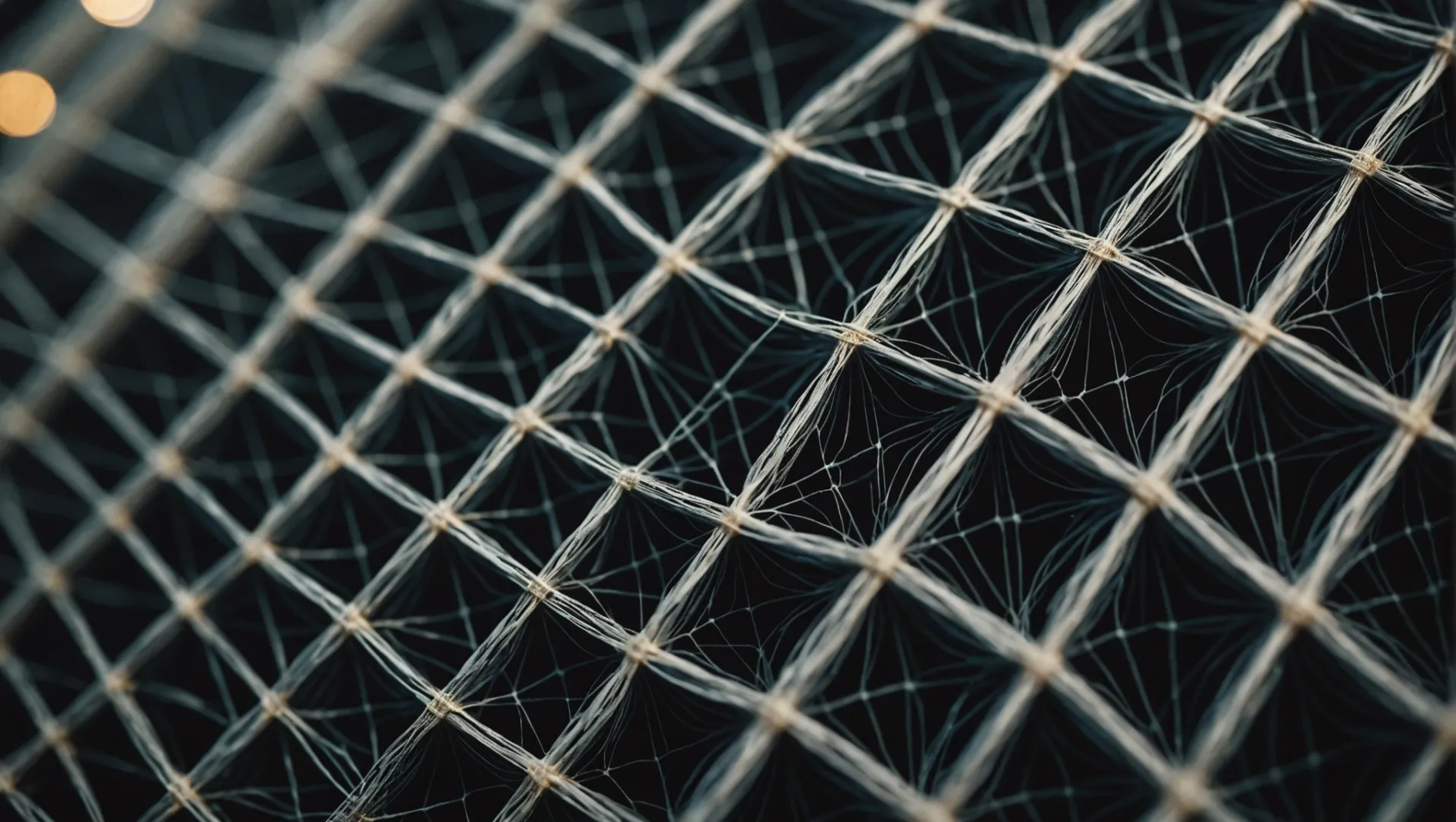
Comprendre HEPA Technologie
Air à particules à haute efficacité (HEPA) sont conçus pour capturer au moins 99,97% de particules aussi petites que 0,3 micron. Ce niveau d'efficacité est atteint grâce à la combinaison de trois mécanismes : l'interception, l'impaction et la diffusion. Lorsque l'air traverse le filtre, les particules sont capturées par le réseau dense de fibres. HEPA efficacité du filtre1 Les normes vont de HEPA 11 à HEPA 14, avec des capacités de filtration croissantes de 95% à 99,995%.
La structure de la HEPA Filtres
HEPA Les filtres sont constitués d'un ensemble de fibres disposées de manière aléatoire, généralement en fibre de verre. Les filtres fonctionnent en ralentissant le mouvement des particules grâce à leur tissage complexe, ce qui permet une capture efficace. Cette structure est essentielle pour empêcher particules en suspension dans l'air2 de passer à travers le filtre et de pénétrer dans l'environnement.
| HEPA Niveau | Efficacité de la filtration |
|---|---|
| HEPA 11 | 95% |
| HEPA 12 | 99.5% |
| HEPA 13 | 99.95% |
| HEPA 14 | 99.995% |
Avantages et limites
Le principal avantage de la HEPA est leur capacité à réduire considérablement les allergènes en suspension dans l'air, ce qui les rend idéaux pour les personnes souffrant de problèmes respiratoires ou d'allergies. Cependant, ils n'éliminent pas les odeurs ou les gaz, c'est pourquoi de nombreux purificateurs d'air les associent à des filtres à charbon.
Malgré leur efficacité, HEPA peuvent s'encrasser avec le temps, réduisant ainsi le débit d'air et l'efficacité. Un entretien et un remplacement réguliers sont essentiels pour garantir des performances optimales.
Applications et cas d'utilisation
HEPA sont largement utilisés dans une variété d'environnements, y compris les maisons, les hôpitaux et les environnements industriels. Ils sont particulièrement utiles dans les espaces qui exigent des normes strictes en matière de qualité de l'air, comme les salles blanches et les laboratoires.
En conclusion, comprendre comment les HEPA La fonction des filtres et leur rôle dans l'amélioration de la qualité de l'air peuvent vous guider dans le choix du système de purification de l'air le mieux adapté à vos besoins.
Les filtres HEPA capturent des particules aussi petites que 0,3 micron.Vrai
Les filtres HEPA retiennent des particules aussi petites que 0,3 micron, améliorant ainsi la qualité de l'air.
Les filtres HEPA éliminent efficacement les odeurs et les gaz.Faux
Les filtres HEPA n'éliminent pas les odeurs ou les gaz ; ils ont besoin de filtres à charbon.
Quelle est l'efficacité des filtres à charbon pour éliminer les odeurs ?
Les filtres à charbon peuvent-ils réellement éliminer les odeurs de manière efficace ou existe-t-il de meilleures options ?
Les filtres à charbon sont très efficaces pour éliminer les odeurs et les composés organiques volatils (COV) en les adsorbant sur leur surface. Ce processus neutralise les odeurs désagréables provenant des animaux domestiques, de la cuisine et de la fumée, ce qui fait des filtres à charbon un choix populaire dans les systèmes de purification de l'air.
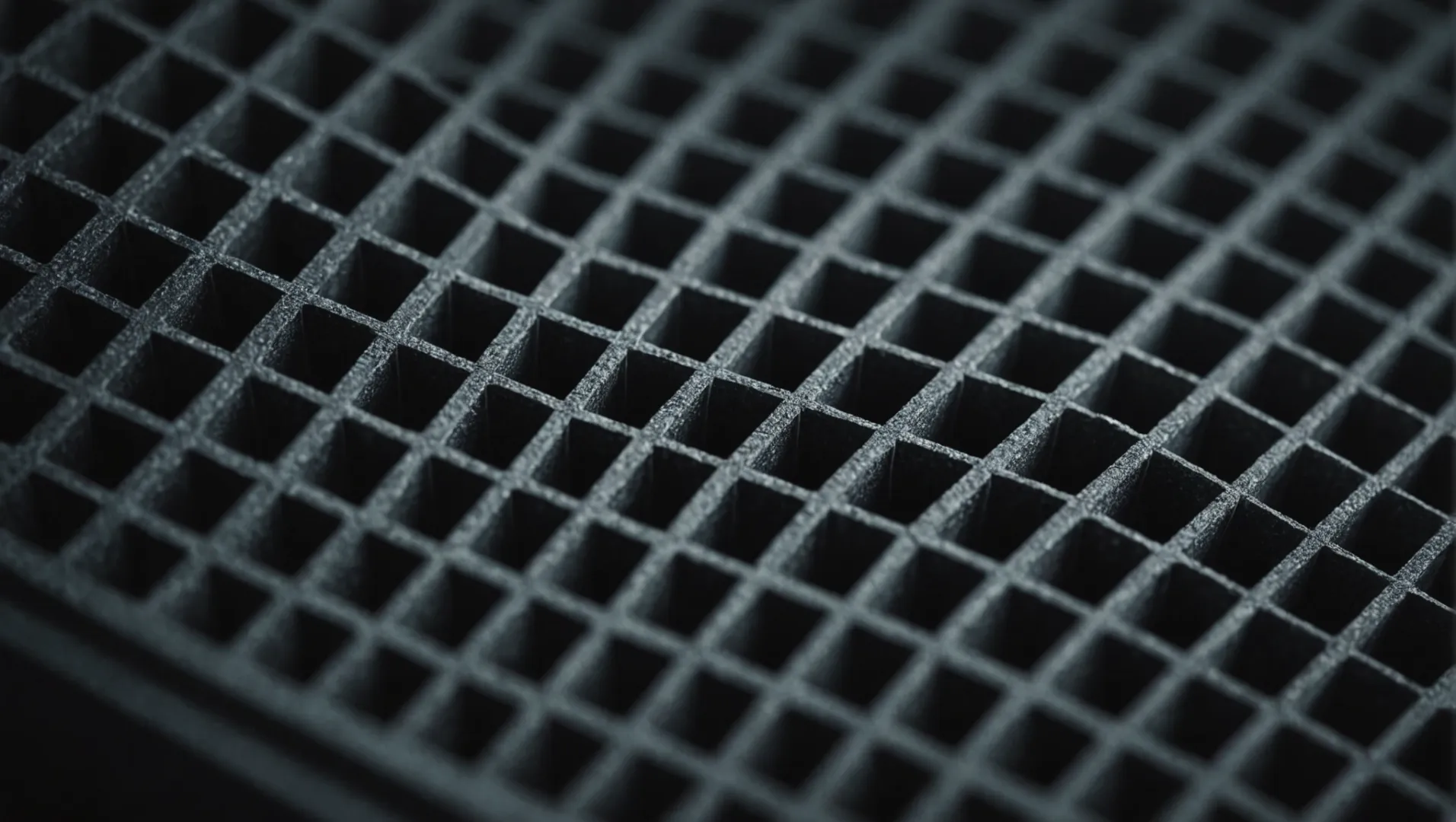
Comprendre les filtres à charbon
Les filtres à charbon, souvent appelés filtres à charbon actif, fonctionnent en utilisant une grande surface de charbon poreux pour capturer et neutraliser les odeurs et les COV. Ce processus d'adsorption est la clé de leur efficacité, car les molécules odorantes adhèrent à la surface du carbone.
Types de filtres à charbon
- Charbon actif ondulé: Offre une grande surface d'adsorption, idéale pour les environnements à fortes odeurs.
- Carbone nid d'abeille: La conception structurée permet de maximiser le flux d'air tout en maintenant une capacité d'adsorption élevée.
Chaque type a ses avantages, avec charbon actif ondulé3 fournir une couverture étendue pour les problèmes d'odeurs graves et carbone alvéolaire4 l'équilibre entre l'efficacité et le débit d'air.
Facteurs affectant l'efficacité
- Débit d'air: L'efficacité d'un filtre à charbon dépend fortement du débit d'air du purificateur d'air. Un débit d'air élevé garantit une exposition plus fréquente de l'air au filtre.
- Épaisseur du filtre: Les couches de charbon plus épaisses peuvent adsorber plus de particules, mais peuvent réduire le débit d'air, ce qui affecte le taux de distribution d'air pur (CADR).
- Intégration de la technologie: Certains purificateurs d'air utilisent des techniques d'intégration avancées pour améliorer les performances des filtres à charbon en les associant à d'autres systèmes de filtration.
Comparaison des filtres à charbon avec HEPA Filtres
Tandis que HEPA excellent dans l'élimination des particules telles que la poussière et le pollen, les filtres à charbon sont inégalés dans l'élimination des odeurs. Cette complémentarité est la raison pour laquelle de nombreux purificateurs d'air intègrent les deux technologies afin de couvrir un plus large spectre de problèmes de qualité de l'air.
Cas d'utilisation des filtres à charbon
- Propriétaires d'animaux: Les filtres à charbon neutralisent efficacement les odeurs d'animaux domestiques, pour un environnement intérieur plus frais.
- Cuisines: Utile pour éliminer les fortes odeurs de cuisine qui ont tendance à persister.
- Fumeurs: Aide à réduire les odeurs de fumée de tabac, améliorant ainsi la qualité générale de l'air.
En comprenant les points forts des différentes technologies du carbone5 et leurs applications spécifiques, vous pouvez sélectionner un système de purification de l'air qui répond à vos besoins uniques.
Les filtres à charbon sont plus efficaces que les filtres HEPA pour l'élimination des odeurs.Vrai
Les filtres à charbon adsorbent les odeurs, contrairement aux filtres HEPA qui capturent les particules.
Des couches de carbone plus épaisses améliorent toujours le flux d'air dans les purificateurs d'air.Faux
Les couches plus épaisses peuvent réduire le débit d'air, ce qui a un impact sur le taux de distribution d'air pur.
Pourquoi les purificateurs d'air se combinent-ils ? HEPA et les filtres à charbon ?
Combinaison HEPA Le filtre à air et le filtre à charbon maximisent la purification de l'air en ciblant les particules, les odeurs et les gaz.
Les purificateurs d'air combinent HEPA et de carbone pour traiter efficacement les particules en suspension dans l'air et les polluants gazeux. Ce système à double filtre garantit une approche plus complète de l'amélioration de la qualité de l'air intérieur en s'attaquant à la fois aux particules et aux odeurs.
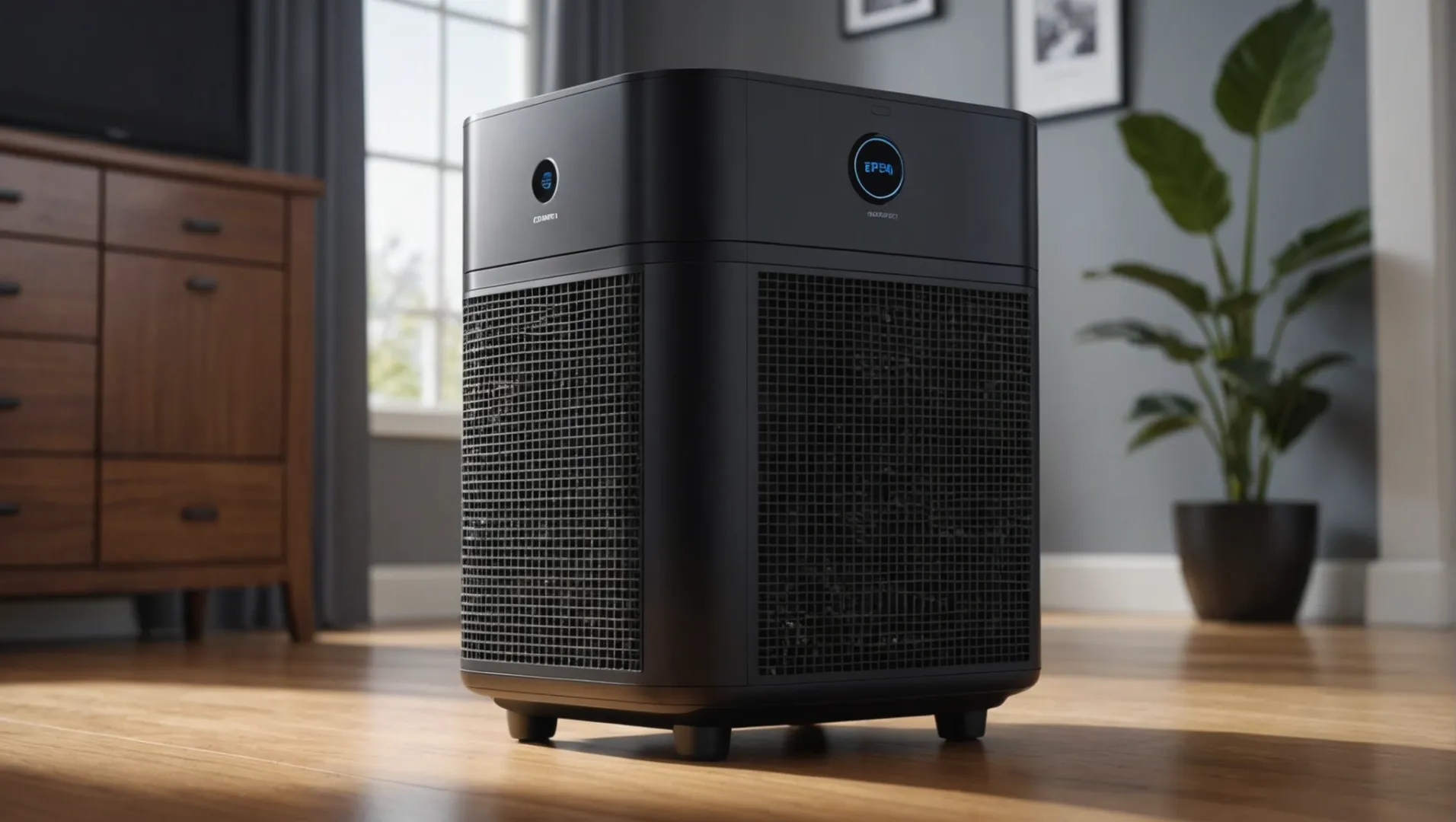
Comprendre HEPA et fonctions du filtre à charbon
Pour comprendre pourquoi les purificateurs d'air combinent HEPA6 et les filtres à charbon, il est important de comprendre leurs rôles respectifs. HEPA excellent dans l'emprisonnement de particules telles que la poussière, le pollen et les squames d'animaux. Ils sont essentiels pour ceux qui cherchent à réduire les allergènes et à améliorer sensiblement la qualité de l'air. D'autre part, les filtres à charbon sont capables d'éliminer les odeurs et les composés organiques volatils (COV), qui ne sont pas capturés par les filtres à particules. HEPA des filtres.
Avantages de la combinaison de filtres
L'intégration des deux types de filtres dans un purificateur d'air permet de traiter un plus large éventail de polluants. Par exemple, alors qu'un HEPA Le filtre à charbon actif capture les particules fines telles que la fumée et les bactéries, le filtre à carbone neutralise l'odeur de la fumée et absorbe les gaz nocifs libérés par les produits de nettoyage ou la peinture.
| Type de filtre | Fonctionnalité clé | Idéal pour |
|---|---|---|
| HEPA | Élimine les particules et les allergènes | Allergies, asthme |
| Carbone | Élimine les odeurs, les COV et les gaz | Maisons avec animaux de compagnie, odeurs de cuisine |
Considérations relatives à l'efficacité et aux performances
L'utilisation des deux filtres nécessite de trouver un équilibre entre l'efficacité et la performance. Par exemple, les différentes qualités de HEPA filtres - allant de HEPA 11 à HEPA 14 - offrent différents niveaux d'efficacité de filtration, avec HEPA 14 filtrant jusqu'à 99,997% de particules. Par ailleurs, le type de filtre à charbon, qu'il s'agisse de charbon actif ondulé ou en nid d'abeille, influe sur sa capacité à éliminer efficacement les odeurs.
En outre, des filtres à charbon plus lourds peuvent augmenter la résistance au sein du système de purification de l'air, ce qui risque de réduire le débit d'air pur (CADR). Il est essentiel pour les fabricants de trouver un équilibre entre l'efficacité de la filtration et le maintien d'un CADR élevé pour une performance optimale de la purification de l'air.
Applications pratiques
Pour les consommateurs, le choix d'un purificateur d'air qui combine à la fois HEPA La combinaison des filtres à air et à charbon permet d'obtenir une protection complète contre toute une série de problèmes liés à la qualité de l'air. Que vous soyez préoccupé par le pollen au printemps ou par les odeurs de cuisson dans votre cuisine, ce système à double filtre peut constituer une solution polyvalente.
En connaissant les points forts de chaque type de filtre, vous pourrez prendre une décision éclairée lors du choix du purificateur d'air qui convient le mieux à votre environnement domestique.
Les filtres HEPA éliminent efficacement les odeurs.Faux
Les filtres HEPA capturent les particules, pas les odeurs ; les filtres à charbon traitent les odeurs.
Les filtres à charbon captent les composés organiques volatils.Vrai
Les filtres à charbon absorbent les COV, contrairement aux filtres HEPA qui capturent les particules.
Quel est le meilleur type de filtre pour les allergènes et l'asthme ?
Naviguer dans le monde des filtres à air est essentiel pour les personnes souffrant d'asthme et d'allergies.
HEPA sont généralement le meilleur choix pour gérer les allergènes et les déclencheurs d'asthme en raison de leur grande efficacité à piéger les particules fines comme la poussière, le pollen et les squames d'animaux. Pour des résultats optimaux, choisissez un filtre avec un taux d'efficacité plus élevé. HEPA comme par exemple HEPA 13 ou 14, qui peuvent capturer jusqu'à 99,97% de particules en suspension dans l'air.

Comprendre HEPA Filtres pour allergènes
Air à particules à haute efficacité (HEPA) sont spécifiquement conçus pour capturer au moins 99,97% de particules aussi petites que 0,3 micron. Ils sont donc très efficaces pour les personnes souffrant d'allergies et d'asthme, car ils peuvent piéger des déclencheurs courants tels que les acariens, le pollen et les squames d'animaux. HEPA filtres7 sont classées en fonction de leur efficacité, avec HEPA 13 et 14 étant les plus efficaces en milieu résidentiel.
HEPA fonctionnent en faisant passer l'air à travers un fin maillage qui capture les particules nocives. Leur efficacité peut varier en fonction de la puissance du filtre, de la capacité de débit d'air et de la fréquence d'entretien. Il est essentiel de remplacer HEPA régulièrement pour maintenir leur efficacité et s'assurer qu'ils continuent à fournir de l'air pur.
Le rôle des filtres à charbon dans la gestion de l'asthme
Tandis que filtres à charbon8 En ciblant principalement les gaz, les odeurs et les composés organiques volatils (COV), les filtres à charbon jouent un rôle de soutien dans la gestion de l'asthme en éliminant les irritants potentiels de l'air. Les filtres à charbon utilisent du charbon actif pour adsorber les molécules, ce qui peut contribuer à réduire l'exposition à certains déclencheurs d'asthme tels que la fumée de tabac ou les odeurs de cuisine.
Toutefois, il est important de noter que les filtres à charbon ne capturent pas les particules, qui sont souvent plus importantes pour la gestion de l'asthme. Par conséquent, bien qu'utiles, ils ne doivent pas être considérés comme la solution principale pour l'élimination des allergènes.
Combinaison de filtres pour une protection complète
De nombreux purificateurs d'air modernes intègrent à la fois HEPA et des filtres à charbon pour offrir des solutions complètes de purification de l'air. Cette combinaison permet aux utilisateurs de bénéficier des capacités de piégeage des particules des filtres suivants HEPA tout en traitant les odeurs et les polluants gazeux avec des filtres à charbon.
L'intégration de ces deux technologies peut créer un environnement optimal pour les personnes souffrant d'asthme ou d'allergies, en assurant une gestion efficace des particules et des gaz irritants. Lorsque vous choisissez un purificateur d'air, privilégiez les modèles dotés d'un système de filtration à plusieurs niveaux afin d'assurer la protection la plus large possible.
Lors du choix d'un système de filtration, évaluez des facteurs tels que le débit d'air pur (CADR), les niveaux de bruit et les coûts de remplacement du filtre pour prendre une décision éclairée. En investissant dans un purificateur d'air de haute qualité doté à la fois de HEPA et les filtres à charbon peuvent améliorer considérablement la qualité de l'air intérieur et atténuer les symptômes des personnes souffrant d'allergies et d'asthme.
Les filtres HEPA 13 capturent 99,97% de particules.Vrai
Les filtres HEPA 13 sont très efficaces et capturent des particules aussi petites que 0,3 micron.
Les filtres à charbon capturent efficacement les acariens.Faux
Les filtres à charbon ciblent les gaz et les odeurs, et non les particules comme les acariens.
Conclusion
Pour une qualité d'air optimale, envisagez un purificateur d'air doté des deux caractéristiques suivantes HEPA et les filtres à charbon. Ils travaillent ensemble, s'attaquant à la fois aux particules et aux odeurs, pour une maison plus saine.
-
Découvrez les différentes normes HEPA et leurs niveaux d'efficacité.. : Selon les normes européennes, il existe 17 classes de filtres - plus la classe est élevée, plus l'efficacité est grande. Les classes E10 à E12 sont des filtres ... ↩
-
Découvrez comment la structure du filtre HEPA capture et retient les particules.. : Ce type de filtre à air peut théoriquement éliminer au moins 99,97% de la poussière, du pollen, des moisissures, des bactéries et de toutes les particules en suspension dans l'air d'une taille de 0,3 ... ↩
-
Découvrez comment le charbon actif ondulé améliore l'efficacité de l'élimination des odeurs.. : Le charbon actif, également appelé charbon de bois activé, est une forme de carbone couramment utilisée pour filtrer les contaminants de l'eau et de l'air, entre autres. ↩
-
Découvrez comment la conception en nid d'abeilles améliore les performances des purificateurs d'air.. : Le charbon actif en nid d'abeille est un nouveau type de produit écologique de purification des gaz résiduels au charbon actif, qui permet de réduire efficacement les odeurs et les polluants. ↩
-
Découvrez les différentes technologies de filtres à charbon pour un contrôle optimal des odeurs.. : Technologie de purification de l'air qui utilise des filtres à charbon ou à carbone pour absorber et contenir les odeurs, les COV et la fumée de l'air. ↩
-
Découvrez les capacités des filtres HEPA à capturer les particules.. : Les filtres HEPA sont des filtres à air mécaniques plissés qui ont une épaisseur considérable afin de capturer les particules. Les plis créent un tapis ... ↩
-
Découvrez comment les filtres HEPA capturent efficacement les allergènes.. : L'utilisation d'un aspirateur HEPA permet de piéger certaines particules et d'en laisser d'autres, qui se retrouvent dans l'espace respiratoire, être éliminées par la filtration de l'air de la pièce ou de la maison. ↩
-
Comprendre comment les filtres à charbon éliminent les odeurs et les gaz.. : Les filtres à charbon retiennent les odeurs grâce à un processus appelé adsorption, qui se produit lorsque les molécules se fixent à l'extérieur d'une surface au lieu d'y être absorbées. ↩


